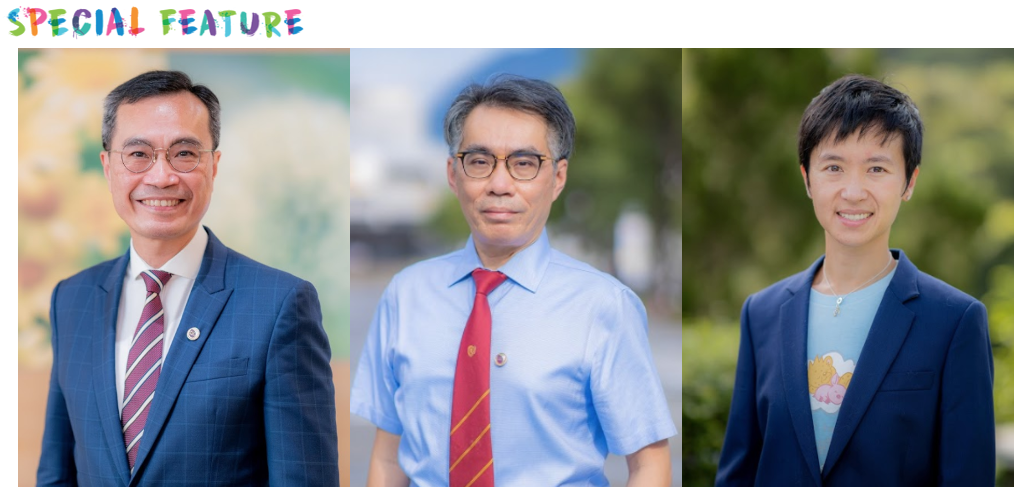
Global Achievement
Dr. LUK Che Chung Humanitarian Service
Dr. LAW Sheung Wai Cultural Accomplishment
Dr. LIYEUNG Lucci Lugee
Dr. LUK Che Chung (MBChB 1986)
Leading Behind the Hospital Scenes
Dr. LUK Che Chung has boldly rewritten the profile of a medical graduate. This year’s Global Achievement awardee has lived out his belief that there are multiple paths to helping patients. Retiring his doctor’s coat more than 30 years ago, after four years of clinical work, he now works within the hospital’s office walls.
A “veteran” of healthcare crisis management, building projects, and healthcare team development, Dr. LUK now serves as the Cluster Chief Executive (CCE) of Hong Kong East and Hospital Chief Executive (HCE) of Pamela Youde Nethersole Eastern Hospital, Wong Chuk Hang Hospital and St. John Hospital. Prior to this role, he was the CCE of Hong Kong West, and before that, the CCE of the Kowloon East Cluster.
Having worked in a public hospital, Dr. LUK is well-acquainted with patients from the grassroots, and believes that empathy is key to practising the profession well. “To run a hospital well or be a good doctor, we must first understand matters like where patients live or where they buy food,” he emphasised. He uses this knowledge to approach daily matters that impact the hospital’s service to the general community. “By making a good decision or helping build a better system, I can help more patients than if I were treating them individually.”
Indeed, his administrative expertise has spawned far-reaching contributions. In 2003, he led Kwong Wah Hospital to care for more than 100 SARS patients and over 700 isolation in-patients. But with all the praises thrown his way for his outstanding leadership during times of crisis, even today as he leads the fight against the COVID-19 pandemic, Dr. LUK shifts the limelight to the people he works with.
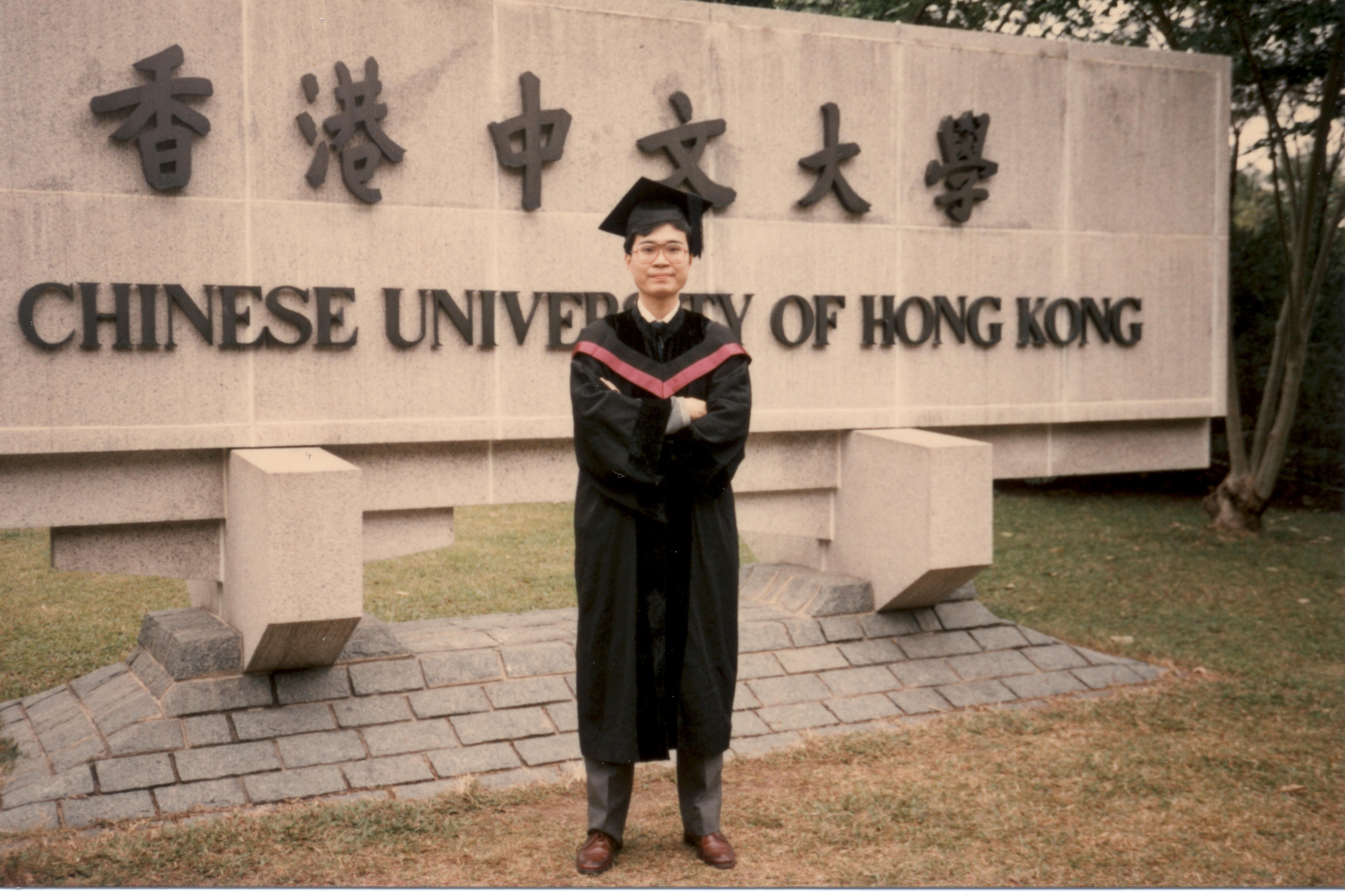
“We often focus on asking scientific questions like ‘Is it a virus?’ These are still manageable by experts,” he said. Leading thousands of hospital employees, Dr. LUK stressed that looking after people—the healthcare staff—who risk their lives to save others’ has been “the most difficult issue to deal with, but also the most important.”
Dr. LUK passionately talked about managing the team’s thoughts and feelings as his most critical task during a pandemic. “I have to consider how to relieve colleagues’ worries towards a disease that they know little about,” he said. What makes the job even more challenging today is how quickly information is spread and accessed. “In 2003, the only Key Opinion Leaders were two radio DJs with scheduled talk shows in the morning and evening. Now, there are hundreds of KOLs and 24/7 information around the world. So we need to be quick to manage how people feel. We need to get the right information, be clear on the situation, and get everyone mentally prepared.”
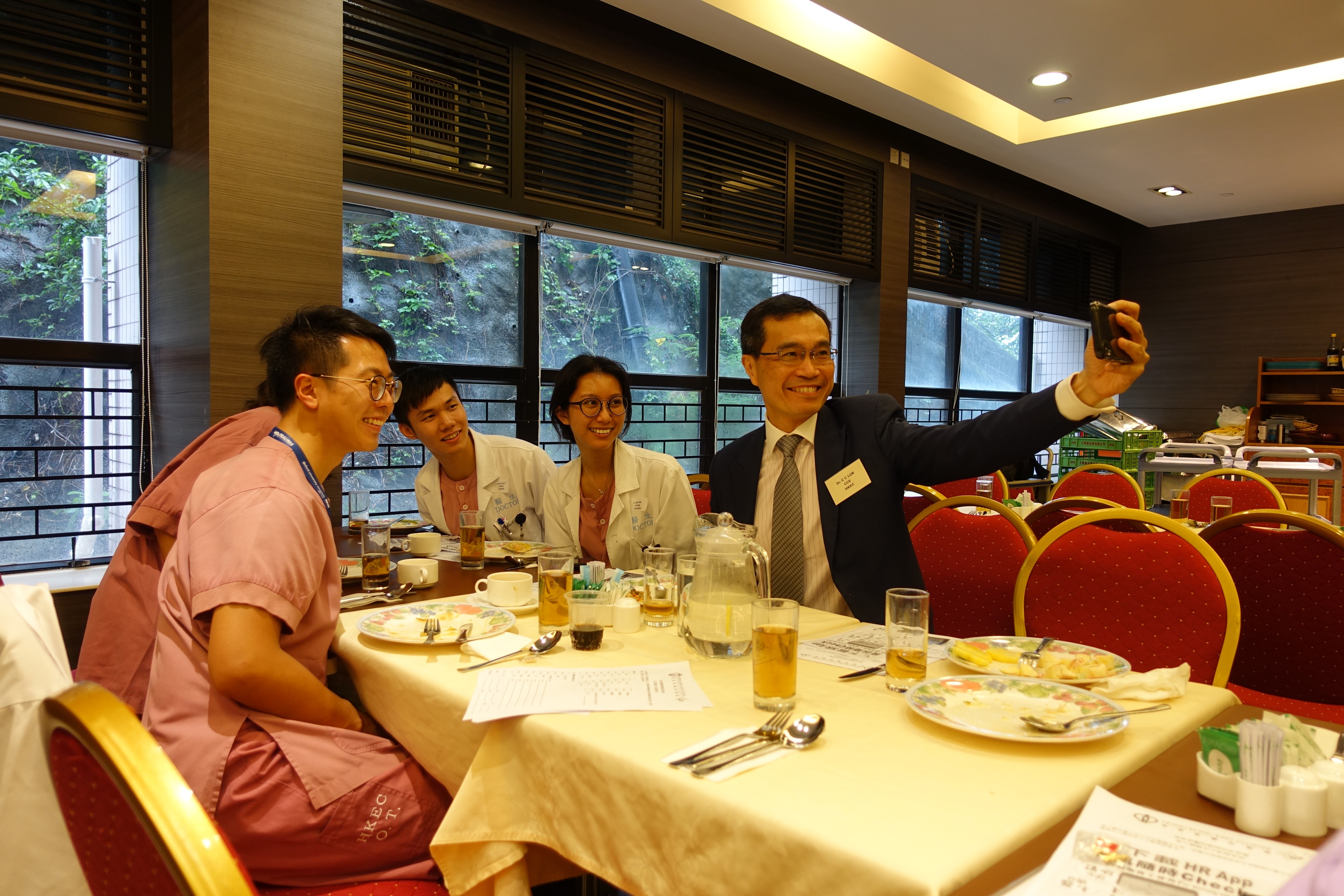
Whether it’s enhancing the hospital’s quality of services or supporting the team’s physical and mental health during a pandemic, Dr. LUK’s chosen path is abundant with opportunities to diagnose and potentially cure administrative issues. “The two roles complement each other. I am very happy to be in administrative work. I hope to improve the system from day to day and enable the medical staff to give more help to the patients. It gives me great satisfaction,” added Dr. LUK.
Asked about his message to aspiring doctors, Dr. LUK reiterated the people-oriented zeal required in the profession: “If you want to be a doctor, you first need to ask yourself: Why? If you only wish to please your parents or acquire a higher social status, I urge you to think very carefully. If offering help to patients brings you satisfaction, stay determined and work hard towards your medical career,” he said.
Dr. LAW Sheung Wai (MBChB 1993)
Uplifting Lives with a Human Touch
Working with advances in medicine, Dr. LAW Sheung Wai actively advocates for the “human factor” when attending to patients—“After all, no matter how advanced medical technology becomes, it still has to be applied to the human body,” he said. An Honorary Consultant of New Territories East Cluster, this year’s Humanitarian Service awardee has empowered many natural disaster survivors to take brave steps back to their lives.
Since the 2008 Sichuan earthquake, Dr. LAW has personally rehabilitated many patients in the mainland through the StandTALL Project, the orthopaedic programme first established by Professor CHAN Kai Ming, Emeritus Professor of the Department of Orthopaedics and Traumatology at CU Medicine, in response to the earthquake.
Dr. LAW recalled the schoolchildren who suffered severe injuries to their limbs. “Our first priority was to look after those with serious or life-threatening injuries. Sichuan Province could not handle all the severe cases so we referred some patients to Guangzhou,” he reminisced. “We were sending a team every weekend to provide support for patient care after their operation. This was how our mission began.”
Helping patients get on with their lives after surviving a traumatic experience proved to be the harder challenge in Dr. LAW’s mission. “Initially, patients thought that amputation means they would be stuck in a wheelchair for the rest of their lives,” he said. While most patients saw themselves as disabled, Dr. LAW did not.
Dr. LAW participated in the Sichuan earthquake rescue efforts in 2008.
Inspired by seeing patients reclaim their lives, he introduced smart prosthetics and other advanced rehabilitation technology to mainland hospitals while providing training to over 2,000 rehab workers.
With the help of the rehabilitation team, including volunteering physiotherapists, occupational therapists and orthopaedic doctors, Dr. LAW’s patients gradually realised that even with orthotic devices, they could move about like ordinary people. “Witnessing their progress was deeply touching for our entire team,” said Dr. LAW, who was recognised by Hong Kong Red Cross with the Hong Kong Humanity Award 2017.
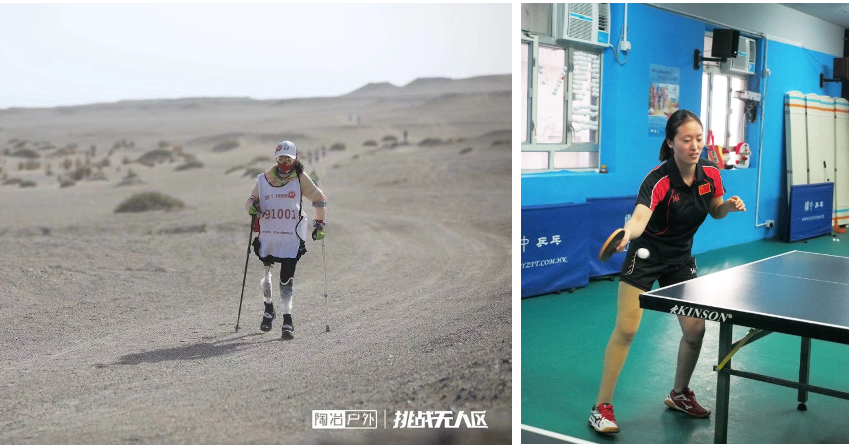
After rehabilitation, a patient successfully finished the trip to the Gobi Desert, while another survivor is now a famous Paralympic table tennis player.
Dr. LAW’s relationship with patients has deepened over the years during his weekly visits to Guangzhou. Reflecting on the year 2013, when he personally experienced the Ya’an earthquake in Chengdu, Dr. LAW said, “Our whole team was scared. It was all so sudden. We experienced the helplessness felt by the injured who had lost their limbs in just a matter of minutes during the Sichuan earthquake,” he said. While the experience evoked fear, Dr. LAW remains steadfast in his mission. “Yes, the danger is real and life is fragile. But seeing the lives of the injured improve keeps us going.”
Today, the surgeon is as motivated as ever to see the survivors’ heartwarming progress. “I don’t know how long the StandTALL Project will carry on, but we are driven by seeing the victims grow up, complete their studies, and get jobs. We are learning from their persistence in recovering and their perseverance in the face of adversity.”
Thanks to his dedication, a female amputee now holds two university degrees, while another survivor is now a famous Paralympic table tennis player.
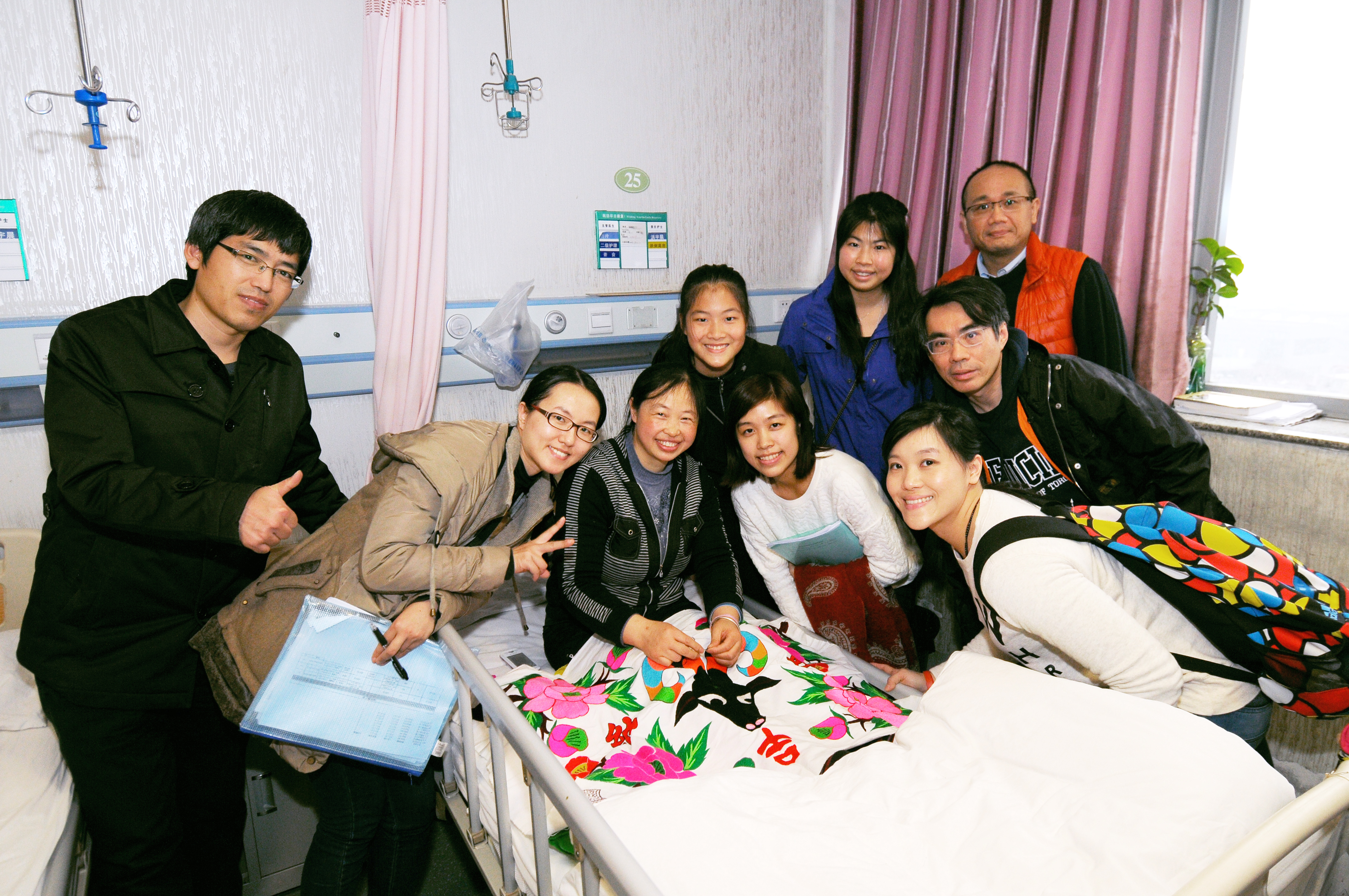
Dr. LAW led medical students to mainland to experience rehab work and inspired some of them to become orthopaedic doctor after graduation.
Eager to share his learning with other students, Dr. LAW brings them to the mainland regularly to see his rehab work up close and put his philosophy—“If you don’t put in the human factor, it won’t work”— in complete action.
“The motto of CU Medicine is Transforming our Passion into Perfection. I hope that our future medical students will remember the original intention for practising medicine. You will be very busy, encounter many challenges, and your passion may fade over time. But I hope you always uphold your professionalism (learning new techniques) and passion (helping patients),” shared Dr. LAW to aspiring doctors.
Dr. LIYEUNG Lucci Lugee (MBChB 2011)
Educating Youth through Art and Positive Energy
A doctor by day and an illustrator by night, Dr. LIYEUNG Lucci Lugee proved that there’s always a different side—to a person or even an animal— worth celebrating. Armed with her art materials, this year’s Cultural Accomplishment awardee adds colour to her medical profession and to children’s lives through her beloved cartoon creation, Dumo.
An orthopaedic surgeon at the Prince of Wales Hospital, Dr. LIYEUNG is very familiar with the art of restoring mobility for patients. Little did she know that she would one day be mobilising community groups and COVID-19 education among children through her artwork.
“Initially, Dumo was used only to promote animal protection and environmental awareness. But since the COVID pandemic started, I thought Dumo could play an additional role as a doctor who can teach children how to fight the disease. So now we have Dr. Dumo et al,” she mused.
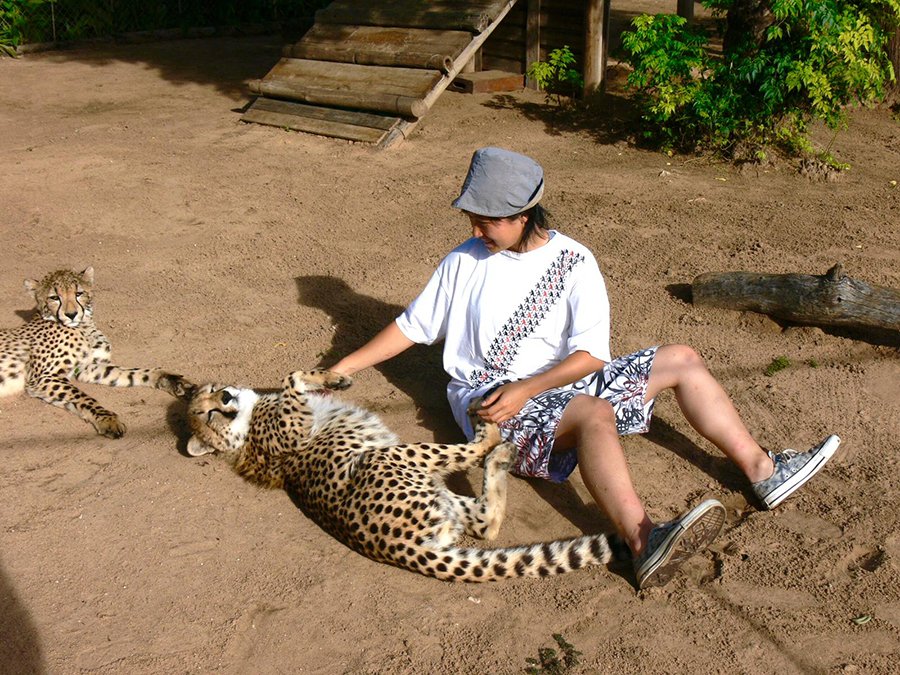
Duma, the cheetah orphan in Namibia, inspired Dr. LIYEUNG to create a cartoon character.
Inspired by a cheetah cub that the surgeon cared for during her volunteer work in Africa, Dumo’s character is far from the wild and aggressive animal that most people think they know. “The adorable Duma gets along well with humans because he had lived with humans since he was a baby. I think humans see cheetahs as being vicious, when in fact, they have a kind side too,” Dr. LIYEUNG said. Dumo’s cartoon character, now joined by other seven animal characters in Dr. Dumo et al, are teaching kids and kids-at-heart about COVID-19 safety including what they can do to help stop the spread of the virus.
“I created Dumo hoping that the character can help stimulate some positive energy and bring smiles to children during this time of adversity,” shared Dr. LIYEUNG, who spent three nights from the time COVID-19 was reported completing the bilingual storybook.
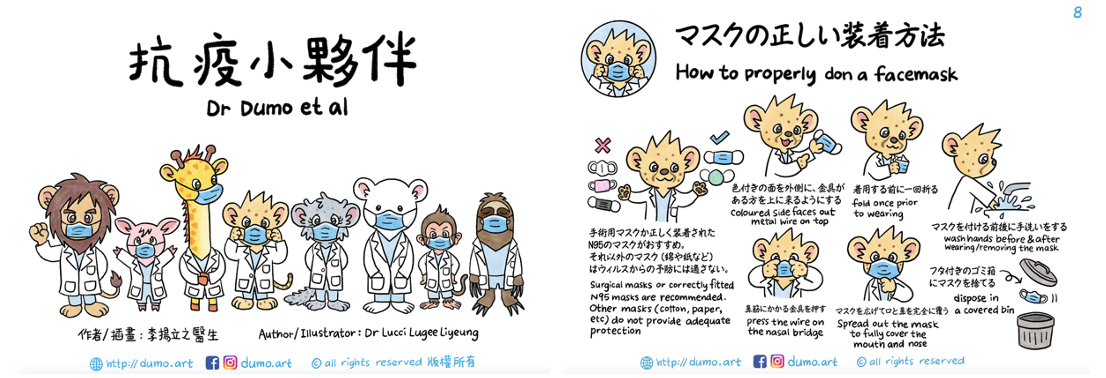
Dr. Duma et al had been translated into over ten languages.
The book became an instant hit after being widely distributed for free, and has since been translated to more than ten languages, introducing the cartoon crew to children in other parts of Asia as well. Many organisations, including some district councils, homeware stores, and child protection institutions, have also shown interest in working with Dumo and his friends.
Drawing on her experience creating Dumo, Dr. LIYEUNG encouraged young doctors to trust their unique abilities as they practice their profession: “Doctors are not all made out of a mould. Everyone is unique. Don’t feel discouraged if others seem to achieve more than you, because we all have strengths destined to shine.”
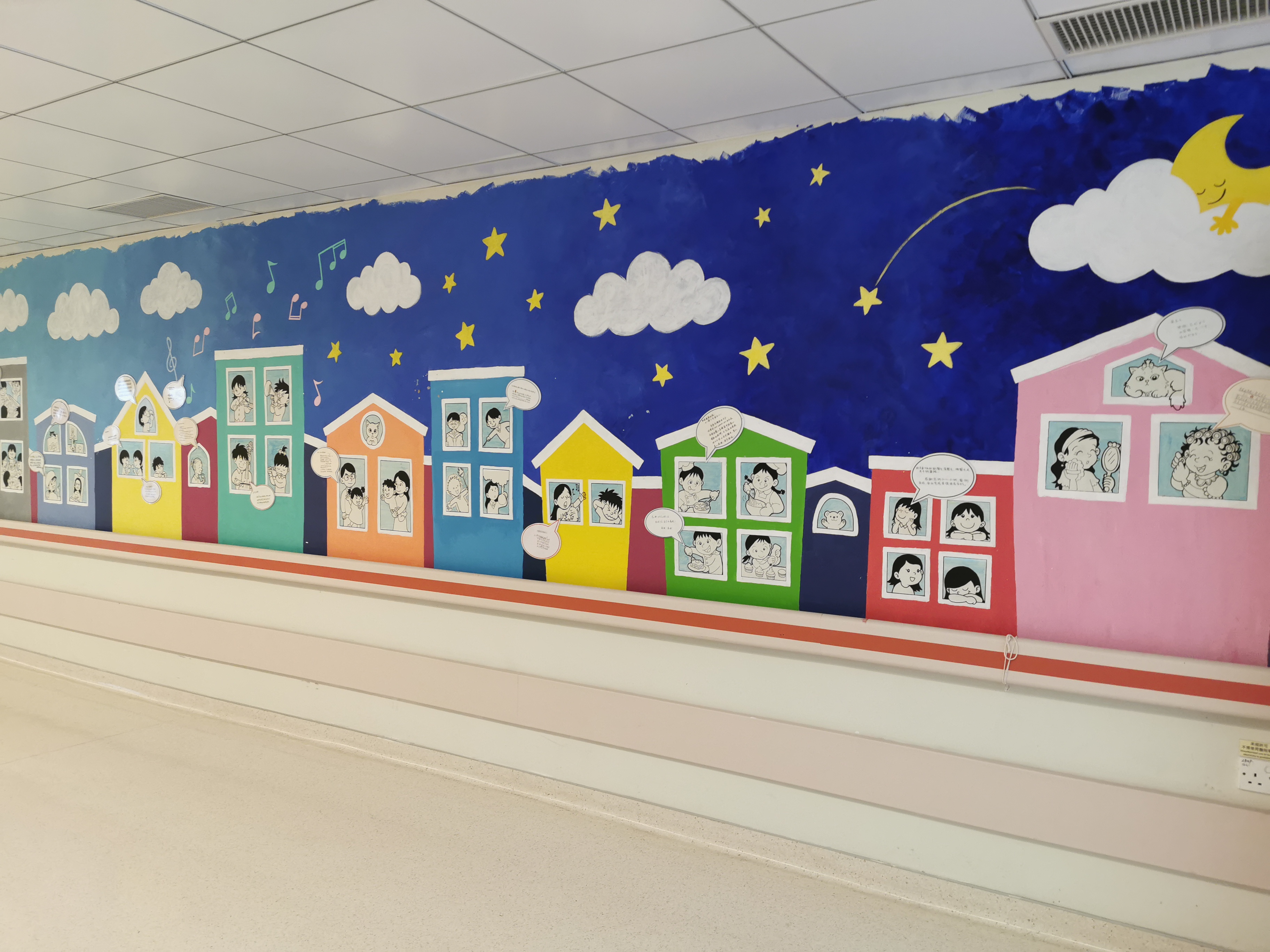
Dr. LIYEUNG did a painting at the doorway of Prince of Wales Hospital for sick children.

